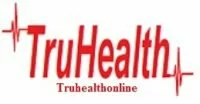An average of 1,000 baby boxes per week was delivered to parents of newborns in the first year of the programme. The Scottish government said 52,065 baby boxes had been gifted to date, with an 85% uptake by parents. The boxes contain items including clothing, a play mat; books, a towel and a sling carrier – and the box itself can be used as a sleeping space. The projected cost of the initiative was £8m for 2017-18, rising to £8.8m for each of the following three years.
The Museum of Childhood in Edinburgh has announced that one of the boxes is to be exhibited in the museum from next year. Sandra Martin, history curator for Edinburgh’s Museums and Galleries, described the boxes as a “great equaliser”. She said: “The museum houses some extraordinary examples of childhood history from all sides of Scottish society. “From real silver spoons, a popular gift with babies in Victorian Edinburgh, to makeshift dolls crafted with nothing more than a wooden spoon and some old cloth, by families who couldn’t afford anything more. “The modern baby box is the great equaliser. The same gifts for baby, available to all new mothers. It’s a pleasure to welcome it into our collection.” Children and Early Years Minister Maree Todd said that they were having a real impact on the families receiving them, and demonstrated that “as a society, we value each and every child”. Ms Todd said: “I’m delighted to have reached this milestone. “It’s an honour for everyone involved – from the organisations providing the items to the box packers to the people delivering the boxes – to have been part of something that is having a real impact on the lives of babies and their carers across the country.” A parent survey revealed the most popular items were the room thermometer, followed by the ear thermometer and the sling. The majority of parents (62%) said they had used or planned to use the box as a bed.
Babies in prams ‘exposed to more pollution’
Babies and young children in prams can be exposed to up to 60% more pollution than adults, a study suggests. Experts said infants were exposed to dirtier air in prams because they were lower to the ground and closer to exhaust pipes. They are also more at risk from the health dangers of dirty air because their bodies are small and developing. The study’s authors said avoiding busy roads and using pram covers were ways to reduce pollution exposure. Researchers at the Global Centre for Clean Air Research, at the University of Surrey, carrying out a review of existing evidence, found that the breathing height of infants in prams was between 0.55m and 0.85m (2ft) above ground level. Because pollution levels are greater within 1m of ground level, these infants are being exposed to up to 60% more fine particle air pollution than adults, the evidence indicates. Roadside pollution contains high levels of toxic metals, which have the potential to impair brain development in infants, the researchers said. Prof Prashant Kumar, one of the authors of the paper, said: “When you also consider how vulnerable they are because of their tissues, immune systems, and brain development at this early stage of their life, it is extremely worrying that they are being exposed to these dangerous levels of pollution.” The researchers said the amount of extra pollution babies in prams breathed in would be lower in areas with less traffic or where pollution was dispersed in other ways, such as with roadside hedges. The study did not look at whether some prams were better or worse for exposure to pollution. The authors called for more to be done to reduce air pollution or lessen its effects, such as lowering the emissions of road vehicles and encouraging greater use of public transport. In the meantime, Prof Kumar said, parents could reduce the risk to their babies and young children by using pram covers and avoiding pollution hotspots, such as busy roads, traffic lights and bus stops. He added: “With the multitude of evidence we set out in this review, it is important that everyone across the country begins a full and frank conversation about pollution and the impact it has on our most vulnerable – from parents and community leaders, to government officials and industry.”

